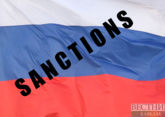The last month has been a month of celebration in the European Union. Gas demand is down because of the unusually warm weather. As a result, prices are down, and the crisis, according to analysts, appears to be averted. The problem is that some of those analysts are adding the qualifier “For now.” The European Commission boasted an over 20-percent decline in demand in gas consumption on the continent over the period between August and November last year. This was not just a result of warm weather but also concerted action by European governments to discourage more demand, Oil Price reports.
Then December turned out to be as warm as October, and demand fell naturally, as did prices. Some began talking about an end to the crisis and an end to the winter, even though in December, the astronomical winter was just beginning.
January is turning out to be warm so far, adding substance to predictions that Europe lucked out in a major way this winter and will finish it with enough of a gas cushion should another cold spell pay Europeans a visit.
In fact, winter has been so mild there has actually been an unseasonable increase in gas storage, Reuters’ John Kemp noted in a recent column. Only he also noted something else in that column. That the second factor leading to this unseasonable increase was the decline in industrial gas consumption. And the only way industrial consumers can reduce consumption is by shrinking their operations.
This is the dark side of the success a lot of media are celebrating alongside Brussels. These celebrations appear to ignore the fact that the 20.1-percent decline in gas consumption across the bloc was also in no small part made possible by exorbitant gas prices that weighed on consumption the way excessive prices always weigh on the consumption of a commodity.
Then there is the fact that although gas prices are down from last summer’s peaks, they are nowhere near where they were in 2019. As Politico noted in a recent story about European gas demand and prices, at close to 70 euro per megawatt-hour, European benchmark gas prices were about five times what they were in 2019.
The problem that European politicians do not want to talk about is that as long as the EU relies on LNG, these prices are not going to go much lower for the very simple reason that LNG could never be as cheap as pipeline gas.
The other reason is that Russian pipeline deliveries are not returning any time soon, not along Nord Stream 1, anyway, and this means that the EU will continue to rely on LNG both by choice and by necessity for the observable future.
Over the short term, there’s some good news for Europeans. As wholesale prices on the TTF market fall, so will retail prices when they catch up with the wholesale prices—retail energy suppliers buy their gas on the wholesale market months in advance—and the winter may well continue mild. But that would likely mean a dry, hot summer, too. And that would increase the demand for energy for cooling purposes.
In fairness, Europe as a whole is a much smaller user of cooling technology than the United States, but that’s largely because it is, for the most part, a colder place. If this warm winter is any indication for this year’s summer, it will be a really hot one, pushing demand higher.
While unlikely to exceed traditional winter demand, this potential new summer demand for energy could make the task of European countries rushing to refill their gas storage a bit harder, even with gas left in storage from the previous heating season.
The goal for the next heating season will once again be 90-percent fill rates for all storage caverns across the bloc. Last year, there was plenty of LNG—at the respective price—with the EU turning into the world’s largest LNG importer in the world thanks to its sudden appetite for the superchilled replacement for Russian pipeline gas.
Yet this year, according to analysts, Europe would need to import even more LNG to secure its winter supply because there would be a lot less Russian pipeline gas than there was last year. One might hope for another warm winter but relying on hopes is hardly a sound energy security strategy.
The International Energy Agency has already warned the EU is facing a supply gap of 30 billion cu m of gas, even with all the demand destruction and deliberate demand cuts. And this gap might prove tricky to fill with China’s LNG appetite returning, too, as the country reopens, even with doubts about the success of this reopening still abounding.
It may, then, turn out that it is too early for the European Union to celebrate the warm winter, especially since it appears that warm or not, the weather is not having any positive effect on the EU’s emissions.










